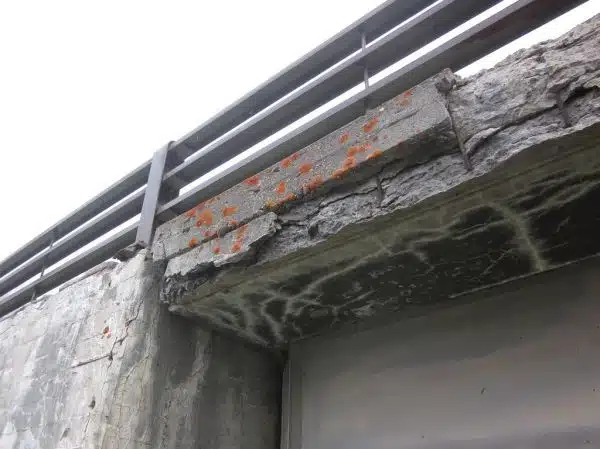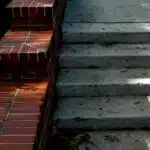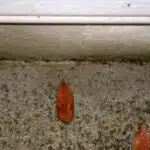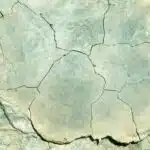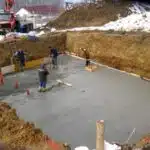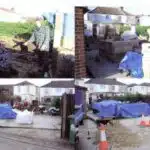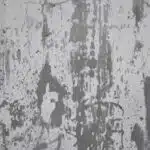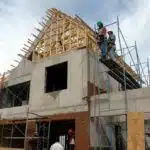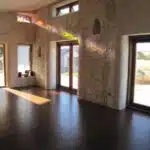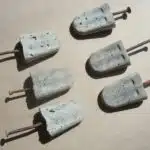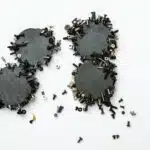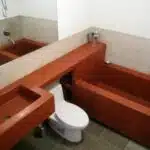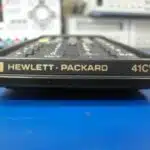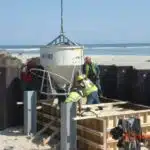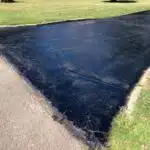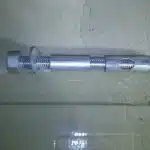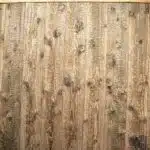Concrete spalling is a common problem that many property owners face. This issue can occur due to a variety of reasons, including exposure to harsh weather conditions, poor installation, and lack of maintenance. Spalled concrete not only looks unattractive but also poses safety risks, which can lead to accidents and injuries. As a concrete repair technician, I understand the importance of preventing and repairing spalled concrete before it becomes a bigger problem.
Preventing spalling is crucial for maintaining the integrity of your property’s concrete surfaces. There are several measures you can take to prevent this issue from occurring in the first place, such as ensuring proper drainage, using high-quality materials during installation, and sealing the surface regularly. However, if spalling has already occurred on your property’s concrete surfaces, it’s essential to address the issue promptly by taking appropriate repair measures to prevent further damage. In this article, we will discuss how to prevent and repair spalled concrete effectively so that you can maintain safe and attractive concrete surfaces on your property for years to come.
Understanding Concrete Spalling
Understanding Concrete Spalling: Common Causes and Prevention Techniques
Concrete spalling is a common issue that affects many outdoor spaces. It occurs when the surface layer of concrete begins to flake and peel away, exposing the rougher layers beneath. This can create an unsightly appearance, as well as pose safety risks if left untreated. Understanding the causes of concrete spalling is key to preventing it from occurring in the first place.
Identifying concrete spalling is relatively easy – you can typically see visible signs of flaking or peeling on the surface of the concrete. The root cause of spalling, however, may not always be immediately apparent. Some common causes include exposure to freeze-thaw cycles, water infiltration, chemical damage, or poor installation practices. By understanding these underlying causes, you can take steps to prevent further damage from occurring.
Prevention techniques for concrete spalling depend largely on the underlying cause. In some cases, such as with freeze-thaw cycles or water infiltration, the solution may involve improving drainage or adding protective coatings. In other cases, such as with chemical damage or poor installation practices, more drastic measures may be necessary such as removing and replacing damaged sections of concrete. By understanding these prevention techniques and taking proactive steps to address any issues early on, you can help ensure that your outdoor space remains safe and visually appealing for years to come.
Moving into the subsequent section about ’causes of concrete spalling,’ it’s important to delve deeper into each individual cause and understand how they contribute to this issue in order to effectively prevent and repair spalled concrete.
Causes Of Concrete Spalling
Concrete spalling prevention is possible if you are aware of the common causes of this problem. Concrete is a durable material that can withstand harsh weather conditions, but it is not invincible. One of the most common reasons why concrete spalls is due to freezing and thawing cycles. When water penetrates into the concrete, it expands as it freezes, causing cracks in the surface. This process repeats over time, weakening the concrete until it begins to flake off.
Another cause of concrete spalling is corrosion of embedded steel reinforcement bars. Steel bars rust when exposed to moisture and air, leading to an expansion in volume that puts pressure on the surrounding concrete. The resulting force causes the surface layer to break off, exposing more steel to further corrosion. This cycle continues until significant damage occurs.
Lastly, poor workmanship during installation can also lead to concrete spalling. If there are mistakes made during mixing or placement of concrete, such as adding too much water or not properly curing the surface layer, then spalling may occur sooner than expected.
Understanding these common spalling causes can help prevent future issues with your concrete surfaces. By taking proper precautions during installation and maintenance and addressing any issues as they arise, you can keep your surfaces looking great for years to come.
In order to identify whether or not your concrete has begun to spall, certain signs should be noted. These include visible cracks or flaking off pieces of material from the surface layer. Additionally, efflorescence – a white powdery substance – may appear on the surface due to moisture penetration or salt deposits left behind after evaporation. Keep an eye out for these signs so that you can take action before significant damage occurs and costly repairs become necessary.
Signs Of Concrete Spalling
Concrete spalling is a common problem that can occur in any concrete structure, such as sidewalks, driveways, and buildings. It refers to the flaking or chipping of the concrete surface, which can be unsightly and dangerous if left unaddressed. As a concrete repair technician, it is important to identify the signs of spalling early on in order to prevent further damage.
One sign of concrete spalling is the appearance of small pits or holes on the surface of the concrete. These are often caused by exposure to moisture and freezing temperatures, as well as chemical exposure from deicing salts and other materials. Another sign is the presence of cracks or fissures in the concrete surface, which may indicate that the underlying structure has been compromised.
To prevent concrete spalling from occurring, there are several steps that can be taken. First, ensure that proper drainage systems are in place to prevent water from pooling on the surface of the concrete. Second, use high-quality sealers and coatings to protect the surface from moisture and chemical exposure. Finally, avoid using harsh chemicals or abrasive materials when cleaning or maintaining the surface.
In summary, identifying signs of concrete spalling early on is crucial for preventing further damage to structures. By taking proactive measures such as proper drainage and regular maintenance with high-quality sealers and coatings, it is possible to minimize the risk of spalling occurring in the first place. In the next section, we will discuss why it is so important to prioritize prevention efforts when it comes to maintaining your concrete structures.
Importance Of Preventing Concrete Spalling
Preventing concrete spalling is a crucial task for any owner or operator of a concrete structure. Spalling can be caused by various factors such as weathering, poor workmanship, and exposure to chemicals. To avoid this issue, it is essential to use proper preventing methods during the construction process.
One effective way to prevent concrete spalling is by using high-quality materials and following proper installation procedures. This includes thoroughly mixing the cement, sand, water, and other aggregates to ensure that they are evenly distributed throughout the mixture. Another important factor is ensuring that the concrete surface is well-cured and protected from environmental factors such as temperature changes and moisture.
In addition to preventing methods, knowing repair techniques is also crucial in maintaining a spall-free concrete structure. The repair process typically involves removing the damaged area of concrete and replacing it with new material. Proper repair techniques include ensuring that the new material has a similar composition and finish as the existing surface and taking into consideration factors such as expansion joints and reinforcement steel placement. By having knowledge of these techniques, owners can take immediate action when faced with spalled concrete issues, ultimately saving time and money in the long run.
To further prevent spalling issues in your concrete structure, proper drainage should be considered. Improper drainage can lead to standing water on the surface of the concrete which can cause damage over time due to freeze-thaw cycles or chemical reactions with any salts present in the water. Ensuring proper slope towards drains or adding additional drainage features like gutters can help prevent water from pooling on your concrete surface. Proper drainage combined with preventative measures during construction will help keep your structure free from unsightly spalling issues for years to come.
Proper Drainage For Preventing Concrete Spalling
As previously discussed, preventing concrete spalling is crucial in maintaining the integrity of any concrete structure. However, if spalling has already occurred, it is important to know how to repair it properly. Repairing spalled concrete involves several steps that must be followed meticulously to ensure a successful outcome.
The first step in repairing spalled concrete is to remove all loose and damaged material from the affected area. This can be done by using a chisel or hammer and then cleaning the area with water and a stiff brush. Once the area is clean and dry, apply a bonding agent to the surface before adding new concrete.
Proper grading and waterproofing techniques can go a long way in preventing concrete spalling. Proper grading ensures that water flows away from the structure, while waterproofing techniques protect the concrete from moisture penetration. It is essential to use high-quality materials for both grading and waterproofing purposes to ensure maximum protection against water damage.
Incorporating these strategies into your maintenance plan will help prevent further damage caused by spalled concrete. By ensuring proper drainage through grading and implementing effective waterproofing techniques, you can extend the life of your concrete structures significantly. Remember always to use high-quality materials when installing new concrete to avoid future issues with spalling.
Using High-Quality Materials For Concrete Installation
- High-quality materials are essential for a successful concrete installation.
- The right materials should be selected based on the application, environmental conditions and desired longevity.
- Proper installation techniques must be followed to ensure maximum effectiveness of the concrete installation.
- Quality control measures should be in place to monitor the installation process and ensure that all components are installed correctly.
- If spalling occurs, proper repair techniques should be used and the existing concrete should be tested for structural integrity.
- Maintenance and inspections should be conducted regularly to prevent further damage and ensure the long-term durability of the concrete structure.
Choosing The Right Materials
As a concrete repair technician, it is my duty to ensure that the materials used in concrete installation are of high quality. Choosing the right materials is essential to prevent and repair spalled concrete. It is important to consider eco-friendly materials as they not only reduce environmental impact but also enhance durability.
Choosing eco-friendly materials for your concrete installation is an excellent way to protect the environment while ensuring long-lasting results. Some examples of eco-friendly materials include fly ash, slag cement, and recycled aggregates. These materials not only reduce carbon footprint but also improve the strength and durability of the concrete. However, it is important to note that choosing eco-friendly options may be slightly more expensive than conventional materials.
Cost-effective options for materials are readily available in the market. Certain additives such as silica fume or microfibers can be added during mixing to improve the durability of the concrete. Moreover, using high-quality aggregates can greatly enhance the strength and longevity of the concrete. When selecting cost-effective options, make sure to choose reputable suppliers who provide quality products at reasonable prices. In conclusion, by choosing environmentally friendly and cost-effective materials for your concrete installation, you can ensure long-lasting results while reducing environmental impact and costs.
Proper Installation Techniques
As a concrete repair technician, using high-quality materials is not the only factor to consider when ensuring long-lasting results for concrete installation. Proper installation techniques should also be taken into account. Improper curing and inadequate surface preparation can lead to premature failure of the concrete.
Proper curing is essential in preventing cracks and improving durability. Concrete must be kept moist during the first few days after installation to allow it to set and gain strength properly. This can be achieved through several methods such as spraying water, covering with plastic sheeting, or applying a curing compound. It is important to ensure that the curing method used is appropriate for the specific type of concrete being installed.
Surface preparation is also crucial in achieving a strong bond between the concrete and any additional coatings or toppings. The surface must be cleaned thoroughly to remove any dirt, oil, or grease that may hinder adhesion. Additionally, any loose or deteriorated concrete must be removed before proceeding with installation. Proper surface preparation ensures that the new layer of material will adhere correctly, resulting in a longer lifespan for the entire structure.
Quality Control Measures
As a concrete repair technician, using high-quality materials and proper installation techniques are essential in ensuring long-lasting results for concrete installation. However, the work does not end there. Quality control measures must also be incorporated to guarantee that the installed concrete meets necessary specifications and requirements.
One of the critical quality control measures is concrete testing. This process involves sampling and testing concrete to determine its strength, density, permeability, and other properties. Concrete testing helps identify any defects or weaknesses in the material before it is installed, which can prevent costly repairs or replacements down the line. As a result, it’s crucial to employ experienced technicians who are knowledgeable about different inspection techniques.
Inspection techniques are another quality control measure that should be utilized during concrete installation processes. Inspections help ensure that all aspects of the project adhere to applicable codes and standards while also providing an opportunity to identify any potential problems early on. These inspections include verifying that mixing proportions are correct, adequate curing methods are used, reinforcement placement is accurate, and surface preparation is sufficient.
In conclusion, incorporating quality control measures such as concrete testing and inspection techniques into the concrete installation process is crucial in achieving long-lasting results for structures. As a professional technician responsible for repairing damaged concrete structures, it’s essential to prioritize these measures to provide excellent service to clients while ensuring their safety and satisfaction with your workmanship.
Sealing Concrete Surfaces Regularly
Concrete sealing is an essential part of maintaining concrete surfaces, preventing spalling and other forms of damage. Sealing concrete helps protect it from moisture, chemicals, and other elements that can cause it to deteriorate. The benefits of concrete sealing are numerous, including increased durability, improved appearance, and reduced maintenance costs in the long run.
There are various DIY sealing techniques available for those who want to seal their concrete surfaces without professional help. One of the most common methods is using a penetrating sealer that fills up the pores in the concrete surface. This type of sealer is ideal for outdoor surfaces such as driveways, patios, and sidewalks. Another popular method is using a topical sealer that creates a protective layer on top of the concrete surface, providing it with additional protection against wear and tear.
When sealing your concrete surface, it’s important to choose the right type of sealer for the job. Factors such as weather conditions, traffic levels, and the type of concrete surface will all influence which type of sealer you should use. Additionally, be sure to follow manufacturer instructions carefully when applying sealant to ensure maximum effectiveness.
Sealing your concrete surface regularly is an important step towards preventing spalling and other forms of damage. However, it’s just one part of a comprehensive preventative maintenance plan that includes other measures like regular cleaning and inspection. In the next section, we’ll discuss some preventative maintenance techniques you can use to keep your concrete surfaces looking great for years to come.
Preventative Maintenance For Concrete Surfaces
Sealing concrete surfaces regularly is an essential step in maintaining the durability and longevity of concrete. However, even with proper sealing, spalling can still occur. Spalling is characterized by the chipping or flaking of concrete surfaces due to a variety of factors such as exposure to freeze-thaw cycles, chemical damage, and water penetration. While it may seem like a minor issue, leaving spalled concrete unattended can lead to more significant problems down the line.
Preventative maintenance for concrete surfaces is crucial in preventing spalling. One key aspect of this is regular cleaning of the surface. This involves removing any dirt or debris that has accumulated on the surface through power washing or scrubbing with a stiff-bristled brush. Additionally, it’s important to avoid using de-icing salts on concrete surfaces during winter months as they can accelerate spalling.
Surface coating application techniques are also effective preventative measures against spalling. Applying a high-quality sealant or coating can help protect against environmental factors that contribute to spalling. It’s important to choose a product that is suitable for your specific type of concrete surface and follow manufacturer instructions carefully during application.
In evaluating the extent of concrete spalling, it’s important to consider both the visual appearance and structural integrity of the affected area. A professional evaluation will determine if repairs are necessary and what type of repair method should be used. With prompt attention and proper maintenance techniques, it’s possible to prevent and repair spalled concrete effectively.
Evaluating The Extent Of Concrete Spalling
Comprehensive inspection of the concrete structure should be conducted to evaluate the extent of damage caused by spalling. Visual inspection, moisture testing and non-destructive testing can be used to identify the cause of the damage. It is important to identify the source of the problem to determine the most suitable repair method. If spalling is identified, preventive measures should be taken to protect the concrete from further degradation.
Inspecting Concrete Structure
As a concrete repair technician, it is essential to inspect concrete structures regularly to identify potential issues before they escalate. Concrete inspection techniques are used to evaluate the condition of the structure and identify any defects that may lead to spalling. The first step in inspecting a concrete structure is visual examination, looking for cracks, surface discoloration or irregularities.
In addition to visual examination, non-destructive testing methods can be employed to identify hidden defects such as delamination or voids within the concrete. Ultrasonic testing and ground-penetrating radar are commonly used techniques for detecting these types of defects without causing any damage to the structure. Identifying common concrete defects such as honeycombing, pop-outs and scaling can help technicians anticipate where spalling may occur.
Inspecting concrete structures should not be limited to just identifying visible defects; it should also include evaluating the structural integrity of the entire system. This includes checking for signs of corrosion on reinforcing steel, which can lead to cracking and spalling if not addressed promptly. By using specialized equipment such as cover meters and half-cell potentials, technicians can determine if corrosion has occurred and take appropriate measures to prevent further damage.
In conclusion, regular inspections using various techniques enables technicians to detect potential issues early on and prevent spalling from occurring. By identifying common concrete defects and assessing the entire system’s structural integrity including reinforcing steel corrosion, repairs can be executed before they become costly problems for property owners.
Identifying The Cause
As a concrete repair technician, evaluating the extent of concrete spalling involves identifying the cause of the problem. Spalling is often caused by freeze-thaw cycles, exposure to chemicals or salts, and improper curing during construction. Identifying the cause of spalling is critical in determining the appropriate repair method.
One common solution to repairing spalled concrete is by removing the damaged area and replacing it with fresh concrete. This method is effective when damage is limited to a small area. However, for larger areas of spalling, more complex repairs may be required. DIY fixes such as using patching compounds or sealers are not recommended as they only provide temporary solutions and can worsen the problem over time.
To effectively identify the cause of spalling, it requires knowledge and experience to diagnose accurately. It is best left to experienced professionals who have access to specialized equipment that can detect moisture levels, corrosion on reinforcing steel, and other underlying issues that contribute to spalling. Understanding these factors allows technicians to provide robust solutions that address not just visible damage but also prevent future problems from occurring.
Choosing The Right Repair Method
For example, let’s say a homeowner notices that their driveway has spalled concrete. The first step they should take is to assess the severity of the damage. If it’s a minor case, then a DIY repair may suffice. However, if the damage is extensive, then it’s best to hire a professional concrete repair technician.
Repair material selection is crucial when it comes to repairing spalled concrete. There are various types of repair materials available in the market, each having its unique properties and purposes. For instance, polymer-modified cement-based products work well for minor repairs as they have excellent bonding capabilities and are easy to apply. On the other hand, epoxy-based materials are ideal for areas where high strength and durability are required.
DIY vs professional repair is another important aspect to consider when choosing a repair method. DIY repairs may be cost-effective; however, they require time and effort to ensure proper application and curing. Moreover, if not done correctly, these repairs may only provide a temporary solution and could lead to more significant problems in the future. Professional concrete repair technicians have the expertise and equipment necessary for successful repairs that will last longer than any DIY fixes.
Surface Preparation For Concrete Repair
Before starting any concrete repair job, surface preparation is crucial to ensure the longevity of the repair. The first step in surface preparation is concrete surface cleaning. The concrete surface should be free from dust, dirt, grease, and other contaminants that can affect the bonding of the new concrete layer. Cleaning can be done using a pressure washer or a chemical cleaner. Pressure washing is effective in removing loose debris, but chemicals are needed to remove stains and tough grime.
Once the surface is clean, the next step is concrete surface leveling. This involves grinding or chipping away uneven surfaces to create an even plane for the new layer of concrete. Leveling can also help remove residual adhesive and paint from previous repairs. A professional technician uses specialized equipment and tools to ensure that the leveling process is done accurately without damaging the surrounding areas.
Proper surface preparation ensures that the new layer of concrete will bond well with the old one and prevent future spalling problems. Neglecting this step can lead to early failure of the repair and costly rework. By investing time in cleaning and leveling before repairing minor spalling, you can significantly improve your chances of success in restoring your concrete’s strength and durability.
Repairing Minor Concrete Spalling
Minor concrete spalling is a common problem that can occur due to various reasons, such as exposure to harsh weather conditions, freeze-thaw cycles, and excessive use. Concrete repair techniques can effectively prevent and repair minor spalling before it becomes a major issue. In this section, we’ll explore some DIY concrete repair tips that can help you address minor concrete spalling.
Firstly, start by cleaning the affected area thoroughly with a pressure washer or stiff brush to remove any loose debris and contaminants. Next, apply a bonding agent to the surface of the concrete to improve adhesion between the existing concrete and new patching material. Then, mix your patching material according to the manufacturer’s instructions and apply it onto the affected area using a trowel or putty knife. Allow it to cure for at least 24 hours before applying a sealer or paint.
Secondly, when repairing minor concrete spalling, it’s important to identify the underlying cause of the problem and address it accordingly. For instance, if the spalling is caused by exposure to freeze-thaw cycles, you may need to install proper drainage systems or use de-icing agents during winter months. If excessive use is causing spalling, consider reinforcing high-traffic areas with steel mesh or fibers.
In conclusion, repairing minor concrete spalling doesn’t have to be difficult or expensive. By following these DIY concrete repair tips and addressing underlying issues that may be causing spalling in the first place, you can effectively prevent further damage and extend the life of your concrete surfaces. In the next section, we’ll discuss how to repair major concrete spalling using more advanced techniques.
Repairing Major Concrete Spalling
When major concrete spalling occurs, it is important to repair the affected areas as quickly as possible to prevent further damage. Concrete spalling prevention involves proper maintenance of the concrete surface, such as regular cleaning and sealing. However, if spalling has already occurred, there are several concrete spalling repair techniques that can be used.
One common technique for repairing major concrete spalling is to remove the damaged concrete and replace it with new material. This involves breaking up the damaged area using a jackhammer or chisel and then pouring new concrete into the space. The new concrete must be allowed to dry completely before use to ensure that it adheres properly.
Another technique for repairing major spalling involves using a polymer-modified overlay material. This material is applied in layers over the damaged area until it is level with the surrounding surface. The overlay material is designed to adhere strongly to the existing concrete and provide a durable surface that resists future damage.
Regardless of which technique is used, it is important to follow proper procedures for repairing major concrete spalling. This includes ensuring that all loose debris has been removed from the damaged area before repairs begin, allowing sufficient time for curing, and protecting repaired surfaces from water and other elements. By following these steps, technicians can effectively repair major spalling and restore damaged surfaces to their original condition.
Moving forward with repairing major concrete spalling requires careful attention to detail as well as adherence to specific techniques depending on the severity of damage sustained by the structure. Finishing and sealing repaired concrete surfaces after successful restoration ensures long-term durability against future wear and tear caused by weathering agents such as moisture or freeze-thaw cycles while also providing an aesthetically pleasing look that complements its surroundings without any compromise in structural integrity.
Finishing And Sealing Repaired Concrete Surfaces
After repairing a spalled concrete surface, the next step is to apply a finishing and sealing solution. Choosing the right sealant is crucial in preventing further damage to the repaired area. There are two types of sealants available: penetrating and film-forming. Penetrating sealants seep into the pores of the concrete and provide protection from within, while film-forming sealants create a protective layer on top of the concrete.
When it comes to finish options, there are various choices available. The most common finishes include smooth, broom, and exposed aggregate. Smooth finishes provide a sleek appearance and are easy to clean, while broom finishes offer added slip resistance for areas with heavy foot traffic or vehicles. Exposed aggregate finishes expose the stones in the concrete mix for a decorative touch.
Once you have chosen your sealant and finish, it’s time to apply them to the repaired surface. Follow manufacturer instructions carefully for best results. If you’re unsure how to proceed, consider hiring a professional concrete repair technician who can guide you through the process and ensure proper application techniques for maximum durability and longevity of your newly repaired surface.
Hiring A Professional Concrete Repair Technician
After finishing and sealing repaired concrete surfaces, it is essential to consider hiring a professional concrete repair technician for larger projects. These professionals have the necessary skills and experience to identify underlying problems that could lead to spalling and can recommend preventive measures to avoid future damage.
Before hiring a technician, it is crucial to conduct due diligence by researching potential candidates’ qualifications and certifications. Additionally, cost estimation should be taken into account as this can vary between technicians. Hiring a skilled technician may come at a higher price point, but the investment will pay off in the long run with less frequent repairs needed.
When searching for a reliable concrete repair technician, look for someone who has:
- A strong knowledge of concrete repair techniques
- Experience working with various types of concrete structures
- The ability to provide references from previous clients
- Licensing and insurance coverage
By following these guidelines, you can ensure that your concrete structures are in good hands with a trusted professional. Don’t hesitate to ask questions about their experience or process during the hiring process. A reputable technician will be more than happy to answer any inquiries and provide transparency throughout the project’s duration.
Conclusion
Concrete spalling is a common problem that many homeowners and property owners face. It can be caused by various factors, including freeze-thaw cycles, water damage, and the use of deicing salts. Understanding the causes of spalling is crucial in preventing it from happening in the first place. Proper drainage and sealing of surfaces are essential preventative measures that can be taken.
If concrete spalling has already occurred, minor repairs can be done using simple techniques such as filling cracks with epoxy or applying a concrete resurfacer. In cases of major spalling, however, it is best to hire a professional technician who has the expertise and equipment to carry out proper repairs.
To ensure that repaired surfaces are durable and long-lasting, it is important to finish them off with appropriate sealers and coatings. This will help protect against future damage caused by water infiltration or exposure to harsh weather conditions.
In conclusion, concrete spalling can be prevented by taking appropriate measures such as proper drainage and sealing of surfaces. If spalling has already occurred, minor repairs can be done using simple techniques while major repairs require professional assistance. The importance of repairing damaged concrete cannot be overstated; it ensures safety for residents and visitors alike while also preserving the aesthetic value of properties. As a concrete repair technician, I strongly urge homeowners and property owners to take action against spalled concrete before it becomes a bigger problem.
Image Credits
- “Lewis River Bridge – Spalling concrete” by YellowstoneNPS (featured)

